What is the world’s oldest civilization and how did they build their society in the ancient world? This article will discuss the formation of the oldest civilization and how their political and religious views helped shape their society’s structure.
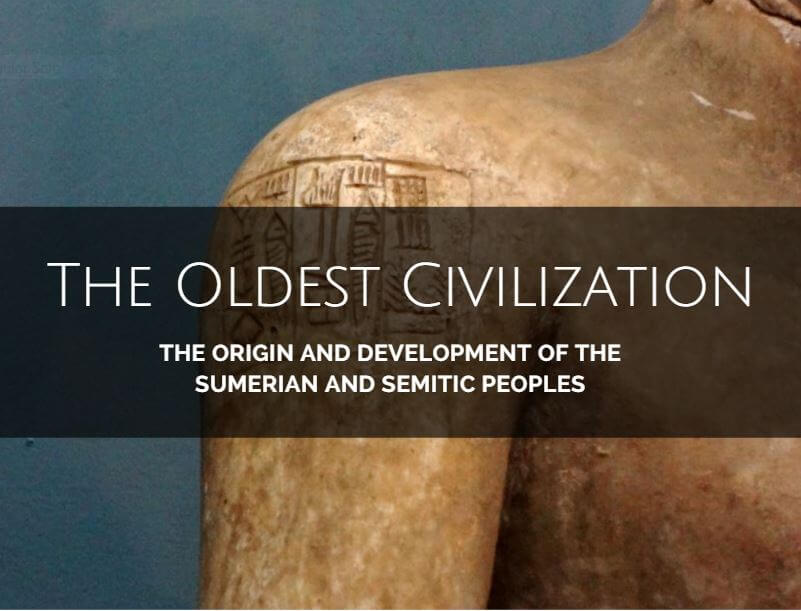
Oldest Civilization in the World: The Sumerians
Contents
- Oldest Civilization in the World: The Sumerians
Location of Mesopotamia
The melting of the ice caps brought with it a gradual increase of the world’s water levels, which flooded several terrestrial mountain ranges and changed the face of the planet. Much of the American coastline disappeared and when the terrestrial arc between Alaska and Asia was submerged, the Bering Strait was formed.
Great Britain was separated by the Atlantic from Europe, and the North Sea and the English Channel were born. Around 5600 BC, the waters of the Mediterranean forged their way into the land that joined Turkey and Bulgaria, giving rise to the Bosphorus, and flooding and expanding a small freshwater lake to create the saltwater Black Sea.
This catastrophic event led to the displacement of a large number of people who had lived on the shores of that freshwater lake up until then. Many of them went to Egypt; others progressed south, towards the fertile lands between the Euphrates and Tigris rivers. It was there that they established the first collection of city-states.
This area between the Euphrates and Tigris (modern day Iraq) was named Mesopotamia (from the Greek meso: ‘middle’, potomos: ‘river’, ‘between two rivers’). The Sumerians, an agrarian and fishing people, settled in this region that, with its fertile soil irrigated by both rivers and their tributaries, provided enough food to support larger populations. The melting of the Armenian mountains between May and September, and the alluvium that swept along the great rivers, allowed for an enormous agricultural yield.
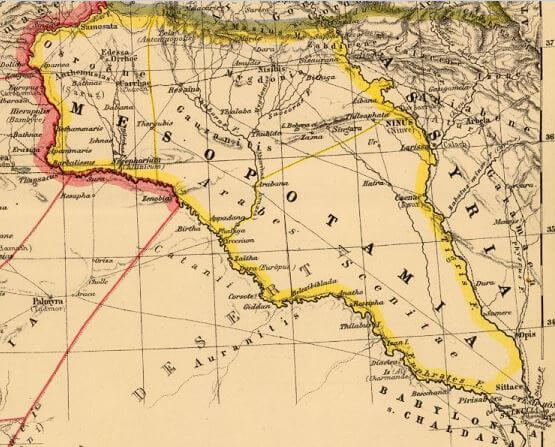
It was here that the world’s first writing system was invented, called ‘cuneiform’ writing, to record the flow of goods and products brought by the flourishing of commerce. Mesopotamia is considered to be an example of one of the oldest civilizations; it isn’t a large city, rather a region dominated by city-states united by a culture and commercial interests.
Asian Mesopotamia, with its important Tigris and Euphrates rivers, was the area where urban cultures, which are among the oldest human civilizations, were developed. There they shaped new life organizations, which left their imprint on future societies and provided us, along with Egypt, the first written historic testimonies.
Mesopotamia, being an area of easy access from Africa, Asia or Europe, became a place of passage for various peoples. This was due to it being an ‘open’ region.
And to the west, the Syrian and Arabian deserts, an area traveled by semi-nomadic peoples who later crossed the Euphrates. And to the north, the Armenian mountains. The Tigris and the Euphrates form a kind of ‘funnel’ that any mountain people to descend.
And to the east, Iran, a plateau that always coveted Mesopotamia’s wealth, separated by the Zagros Mountains. And to the south, the Persian Gulf. These geographic conditions influenced the historical evolution of the region. While Egypt enjoyed isolation and security for centuries, there were constant changes and incursions of people in Mesopotamia, one rule after another. Most of these people were of Semitic origin, coming from the Arabian Desert. In Mesopotamia, two zones with historic and geographic differences can be distinguished.
To the south, Lower Mesopotamia (later Chaldea), a plain with fertile land thanks to the flooding of the rivers. In antiquity, this area was inhabited by different peoples; initially, Sumerians settled in the southern area of Lower Mesopotamia. This region then took the name Sumer.
Then, the Akkadians settled in the middle of Mesopotamia. Their territory was called Akkad. Later, other peoples arrived, liked the Amorites and the Chaldeans. And to the North was Upper Mesopotamia or Assyria, a mountainous area, with a harsh climate and little vegetation. The Assyrians lived in this region, and the formation of this area helped contribute to the rise of what historians consider one of the oldest civilizations.
Political Organization of the First Civilization: Temples and Palaces
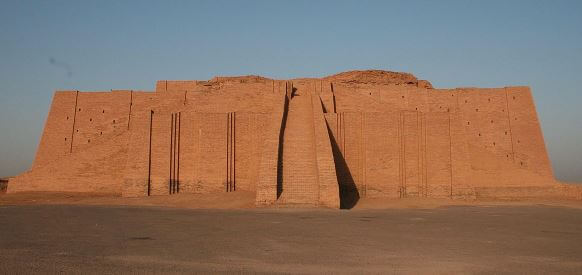
In general, the people who occupied Mesopotamia were from diverse origins, and had an absolute monarchic, theocratic government. With the Sumerians, Mesopotamia was divided into city-states (we could also call them ‘city-temples’); each city, with its surrounding territory was a temple, where they ruled and addressed the population from. At this stage, politics and religion were intimately related. The ruler was a prince-priest. The ‘high priest’ or ‘patiesi’, represented the deity, although he wasn’t the god, as was the case in Egypt, where the Pharaoh was ‘Horus himself’.
The priest administered the city’s administration, the temple’s income, led the soldiers, monitored the upkeep of the canals an organized worship. The temple played a fundamental role then. It was the axis of political, religious and also economic life.
Later, with the expansion of the Sumerian cities, administration became more perfected and there was a change in the patesi’s responsibilities, who would henceforth dedicate himself exclusively to worship. Military chiefs turned kings would perform the rest of the roles.
These kings would maintain the division of Mesopotamia into small states; each city, for example Ur or Eridu, was a state of its own, with its own governmental institutions, not depending on a greater regional or imperial power. Their only bond to the rest of the Sumerian city-states was culture: writing, beliefs, and language. This was maintained until the Akkadian unification.
The Akkadians established Mesopotamia’s first empire or unified state. Their power was recognized by almost all Mesopotamian cities. Their political organization, unlike the Sumerians, would have the palace as its most important component; the king would have greater power than the priests.
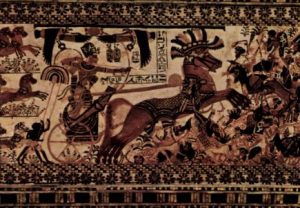
Hammurabi, the king of Babylonia, will later conclude this period, perfecting political, military and administrative organization. But Mesopotamia’s most powerful kings were Assyrian. His empire was the most powerful seen so far in the region. His bold and cruel warriors organized the area’s defense systems and a standing army made up of infantry, cavalry and war chariots.
The Assyrian king lived surrounded by courtiers. All of the empire’s subjects were the monarch’s servants and they owed him absolute obedience, peasants, as much as ministers. All were servants of the king as if they were slaves. He ruled provinces and kingdoms with an iron fist from his luxurious palace. His tyrannical power, without limits of any kind, is described with pride in his own accounts of campaigns, which lists decapitated heads, the destruction of cities, massacres and mutilations.
In summary, until the formation of the great Semitic empires (Akkadian and Assyrian), Mesopotamia’s political organization was based on ‘city-states’, which were comprised of an urban core and a surrounding rural area, with an economically and politically independent regime.
Justice was administered by in principle arbitrary judges but then was subject to the wise provisions of the Code of Hammurabi. The Law of Talion was established, summarized by the phrase “an eye for an eye, tooth for a tooth”, that is to say, the punishment should be relative to the offense. Despite its severity, this code mitigated punishments and established an admirable legal system for the age, which was a model for other ancient peoples.
The Economy of the First Civilization: The Fight for Water
The characteristics of the geographical environment favored the development of agriculture, which provided abundant crops of cereals for centuries, always with the help of artificial irrigation. Therefore the authorities had very strict control over the distribution of the vital element water, and therefore of the maintenance of the channels that allowed for irrigation. The network of canals was so perfectly built that they still serve as models for the Iraqi agronomic authorities. These canals increased the arable area and made the development of civilization possible.
The most important crops that they had were cereals, like wheat and barley, and palm fruits (like dates).
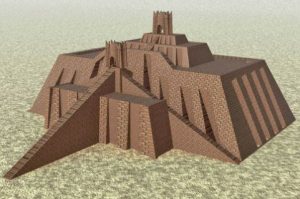
In Sumerian times, the temple was the heart of economic life, the center of land administration, the irrigation system, and commerce. It was also the meeting place for craftsmen. Therefore, the temple was lively: grains were stored there, tributes were given, and commercial caravans rested. Worship was also based there, as well as the administration of justice and education. In addition, the temple granted loans to people in need.
The crafts were more developed than in Egypt, and fabrics, weapons, and jewels were produced, which merchants exchanged for other items not present in Mesopotamia, such as copper and tin. They worked leather with a special dedication, with which they made footwear, wineskins, helmets, breastplates, shields and boats, called skeleks.
The currency wasn’t in circulation, but they had credit, that is, borrowing with interest. In addition, they formed efficiently operating mercantile societies. Merchants grew rich with risk and enjoyed social consideration.
Mesopotamia’s economic organization, like Egypt’s, was based on tax. Daily and additional taxes were required. To avoid fraud, the authorities conducted a calculation of crops and controlled them through special committees composed of temple officials, scribes, and residents.
Later, the princes became independent of the temple and erected their own palaces; the economic functions then passed to the latter.
Mesopotamia, like Egypt, lacked basic raw materials such as wood, stone, and metals. This shortage was resolved through commerce:
- Wood was imported from Phoenicia
- Stone from Elam
- Metals came from the Anatolian plateau
These commercial transactions were made through bartering as the Mesopotamians, as previously mentioned, did not have currency. They did have items as measures of value; for example stamped metal ingots or a number of cereals.
Societal Structure of the Oldest Civilization: The Free and the Slaves

We can know about Mesopotamia’s social structure thanks to the Code of Hammurabi. The first important distinction between people was the division between freemen and slaves. Slaves in Mesopotamia, unlike Egypt, were very numerous, and usually prisoners of war.
Among the freemen, several social groups existed:
– NOBLES
The king, important officials, priests and, among the Assyrians, great military chiefs, made up the nobility. They were a privileged group, with large tracts of land, and were the most exalted social sector.
– MERCHANTS
They came to play a prominent role in society as they grew rich thanks to trade. They were in charge of major trade and crossed vast territories.
– ARTISANS
They worked in service of the king or the temple, and also many of them lived in the cities in particular.
– FARMERS
Since the Mesopotamian economic system was agricultural, they made up the largest social group. In the early days, they only worked for the temple. The kings then gave donations and the peasants were able to work their own plots; private property emerged. The Code of Hammurabi allows us to know about life in Mesopotamia and its customs. Crimes were severely punished according to the law of the talion (“an eye for an eye, tooth for a tooth”), a principle where the person who committed a crime is punished with a penalty similar to the damage they committed. The death penalty was very frequent. The family was monogamous. Marriage could only take place between free men and women, not slaves. Among the Assyrians, marriage took place after an exchange of gifts. In the case of adultery, the husband could kill the woman, then he had to wait five years to remarry. A slave could start a family among his equals, which did not end with a sale.
The Spiritual Realm
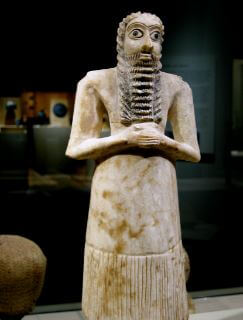
Religious sentiments permeated the entire lives of the inhabitants of ancient Mesopotamia. They worshiped many gods, represented as natural phenomena or with anthropomorphic characteristics. In addition to official veneration, supported by the priests, there was a very deep feeling among the people themselves that was fundamentally linked to nature and to the earth. There was a veneration of the annual budding, flowering, and death that nature displayed, which was linked in ancient Sumer with life and death, and with belief in the great beyond. On the other hand, the significance of these beliefs can be linked to the importance of agriculture on the lives of sedentary peoples.
Ideas about the annual rebirth manifested themselves in the form of ‘sacred nuptials’ between Inanna (goddess mother of the land, fertility, and love) and Dumuzi (the divine shepherd, protector of the herds and the god of vegetation). The union gave fertility and new life to the faithful who participated. This belief, and the spring celebration of the divine weddings was fundamental in the religion of ancient Sumer. The celebrations weren’t just symbolic but were generally performed by the high priest, on behalf of Dumuzi, and the chief priestess, on behalf of Inanna. Later, Ishtar and Tammuz represented the sacred couple for the Mesopotamian Semites.
Among the numerous Mesopotamian gods, in addition to those mentioned, these should be noted:
- Enlil, lord of the wind and tempests, driver of destinies and lord of the tables of fortune.
- Marduk, creator god, and benefactor of Babylon, who came to be very important and became the god of all Mesopotamia.
Poems about heroes were an original aspect of the Mesopotamian religion. Heroes were semi-divine characters, a kind of transition between gods and men. The Epic of Gilgamesh, about a sage who unsuccessfully fought for immortality for all men, is famous.
Divination was a widespread custom in Mesopotamia. This practice could be achieved in several ways. They ‘predicted the future’ by examining the viscera of a sacrificial animal; the liver of a lamb or a goat, for example, was considered the image of the consulted god. They also prophesized by observing the shape of the clouds and the movement of the stars. They are considered the inventors of the horoscope, i.e. divination of people’s futures according to their date of birth and the position of the stars in the sky.
Among the various ritual ceremonies performed by the oldest civilization in the world are:
- Processions (walking, in boats or in carriages) presided over by figures of the gods;
- Seasonal festivals, agapes (with many diners, musical bands interpreting religious hymns and dances);
- Consulting the oracles.
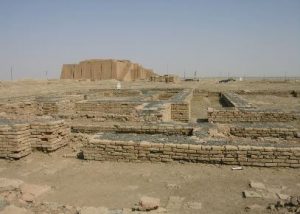
The Mesopotamians didn’t have monumental tombs, despite the cult of the dead and the belief in the great beyond being important religious principles. Their deceased were buried in the gardens of houses or under bedrooms, where they were offered offerings and sacrifices.
People express their thoughts, customs, and beliefs through art. Knowledge of artistic expressions helps us to discover the essence of each culture.
Read also: Ancient Mesopotamian Art and Architecture
According to legend, the Sumerians received the first arts from their gods. Its general characteristics are grandeur and piety. Sculpture and painting were, as in Egypt, subject to established rules. Artists had greater freedom of expression in the representation of animals.
Architecture: Temples and Palaces
The construction of temples had the most important role in this ancient civilization. A temple was not a single building, but a set of buildings. The rooms dedicated to worship were carefully separated from the areas intended for economic purposes. In the upper part of the temple, they developed a characteristic construction, the ziggurat, a type of stepped tower with several different colored floors. Its function is not very well defined, but the Mesopotamians affirmed that ‘it housed God himself’. The palaces were also important constructions, symbols of the power of the kings. A combination of grandiose buildings surrounded by fortifications made up a palace. The living rooms and bedrooms were arranged around a central courtyard. As a ‘guard’, animal sculptures were placed on the doors. The Assyrian palaces were gigantic. Sargon II defined his as “an unrivaled palace“. Opposite the palace was a huge plaza, where people gathered for important dates. From there too, armies departed and war broke out.
The essential building material in Mesopotamia was raw brick, sometimes glazed brick. To compensate for poor quality construction, they covered the walls with reliefs and sculptures.
Sculptures in the Sumerian Civilization
Sculpture in Mesopotamia did not have the monumentality of those in Egypt. Above all, they worked on reliefs and small statues. The Sumerians excelled in carving hard stones with which they made seals. They were the creators of the ‘seal’. These small objects contained scenes of daily life at the time: shepherding, hunting and sacrifices. Their marble vessels are also examples of their creativity, with reliefs of men and animals.
Mesopotamian sculpture came to its climax with the Assyrians. But Assyrian productions have a different character from Sumerian-Akkadians. Assyrian art is ‘linked to battle’, a militaristic art, which aims to praise the king and his conquests, illustrates the glory of the monarch, with scenes of fighting and hunting, and the defeat of his enemies. Assyrian artists were masterful at carving animals. They created them, their expressions and realism with great strength. Their shapes give the feeling of movement and accuracy.
Sciences and Cuneiform Writing of the Oldest Civilization on Earth
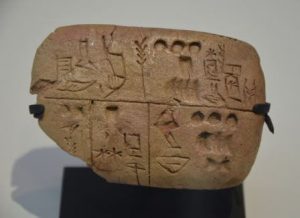
The Mesopotamians’ scientific knowledge was the heritage of the priests. Most of the population did not have access to it.
The preferred science in Babylon was astronomy, because of the importance they attached to the stars in the destiny of men. They created a calendar that divided into 12 lunar months.
In mathematics, they created a sexagesimal system of weights and measurements, based on the number 60. Currently, this system is conserved when measuring the division of hours and minutes. But the great cultural contribution of Mesopotamia was the creation of cuneiform writing, one of the oldest in the history of mankind. Its name comes from the Latin for ‘wedge shape’ in reference to the triangular prism that their characters have. They were engraved with a reed or bone stylus, on tablets of soft clay, which were then dried in the sun or cooked. It was a complex writing system in which different types of signs were used. Cuneiform writing was developed by the Sumerians and then used by the Assyrians and the Babylonians. It is possible that primitive European alphabets derived from it. This type of writing also allowed for the development of literature in Mesopotamia. Their themes vary: fables of talking animals, advice from parents to children, letters to the gods asking for favors, and poems.
The Legacy of the Sumerians
- Architecture: first brick constructions
- Political life: Organization of the first city-states
- Economic life: Advances in agricultural techniques and artificial irrigation.
- Sciences: Creation of cuneiform writing, development of astrology, horoscopes, seven-day week, and a sexagesimal system.
- Social life: Codification of laws – The Code of Hammurabi
